Welcome to the majestic Royal Palace in Phnom Penh, Cambodia. This iconic landmark is a testament to the rich history and culture of the country, offering visitors a glimpse into Cambodia’s past and present. In this comprehensive guide, Palm Vietnam Travel will take you on a virtual tour of the Royal Palace, exploring its magnificent architecture, significant historical sites, and the vibrant culture that surrounds it. Whether you’re a history enthusiast, a cultural explorer, or simply curious about Cambodia’s royal heritage, join us as we uncover the wonders of the Royal Palace.
A Brief Overview of the Royal Palace
The Royal Palace, also known as Preah Barum Reachea Veang Chaktomuk, is a grand complex located in the heart of Phnom Penh, Cambodia’s capital city. Built in 1866, the palace serves as the official residence of the King of Cambodia and is a symbol of the country’s monarchy. Spread across an expansive area of 174,870 square meters, the Royal Palace encompasses numerous buildings, gardens, and ceremonial halls, each holding its own historical and cultural significance.
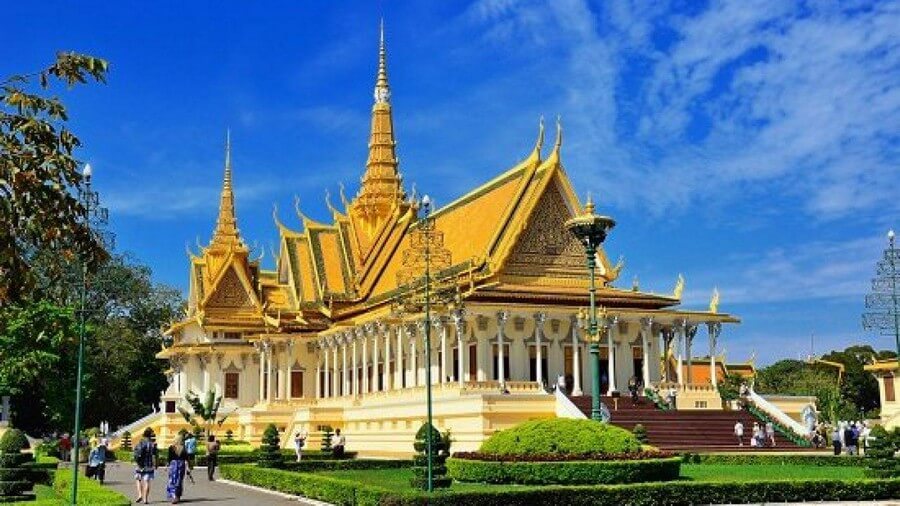
The Architecture of the Royal Palace
The architecture of the Royal Palace is a harmonious blend of traditional Khmer design and French colonial influences. The complex features intricate details, vibrant colors, and ornate decorations, making it an architectural masterpiece. The main structures within the palace grounds include the Throne Hall, the Silver Pagoda, the Khemarin Palace, and the Royal Treasury.
The Throne Hall
The Throne Hall, or Preah Tineang Tevea Vinichhay, is the most prominent building within the Royal Palace complex. This magnificent structure serves as a venue for royal ceremonies, coronations, and other official events. Its architectural style is a fusion of Khmer and European elements, characterized by its soaring spires, intricate carvings, and gilded accents. The interior of the Throne Hall is equally impressive, with a grand throne adorned with gold and precious gems, symbolizing the monarchy’s power and prestige.
The Silver Pagoda
Located within the grounds of the Royal Palace, the Silver Pagoda, or Wat Preah Keo Morokat, is a breathtaking temple renowned for its stunning silver floor. The pagoda houses a collection of priceless cultural and religious artifacts, including a life-sized Buddha made of solid gold adorned with diamonds and emeralds. The Silver Pagoda is a sacred place of worship and is open to the public for guided tours and exploration.
The Khemarin Palace
The Khemarin Palace, also known as the Inner Court, is the private residence of the King and his family within the Royal Palace complex. It is a restricted area, not accessible to the public, and serves as the royal residence’s administrative center. The Khemarin Palace reflects the traditional Khmer architectural style, characterized by its elegant simplicity and serene atmosphere.
The Royal Treasury
The Royal Treasury, or Preah Reacheanachak Samdech Preah Bat Ang Eng, is a building within the Royal Palace complex that houses Cambodia’s royal regalia and treasures. It is here that the crown jewels, ceremonial costumes, and other precious artifacts of the monarchy are kept. The Royal Treasury is highly guarded and not open to the public, but its significance cannot be overstated in preserving Cambodia’s cultural heritage.
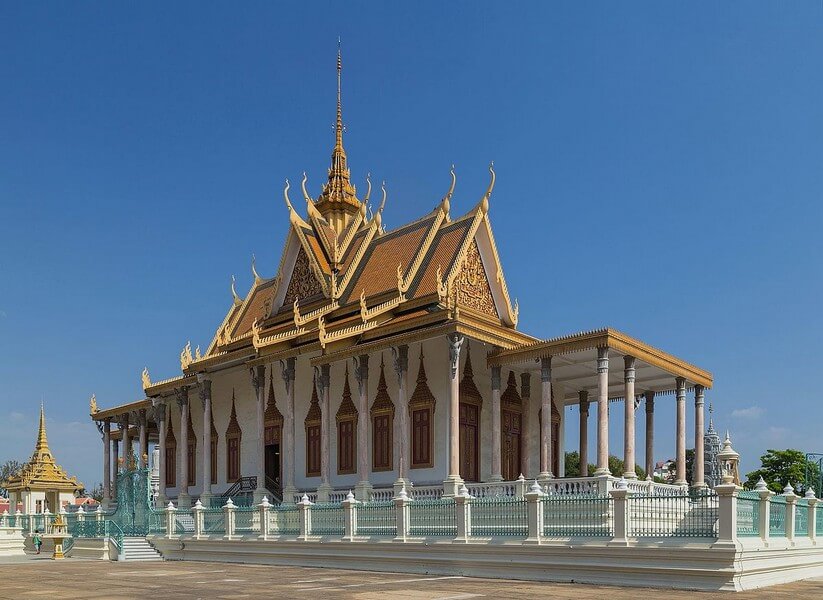
Historical Significance of the Royal Palace
Beyond its architectural beauty, the Royal Palace holds immense historical significance for Cambodia. It has been witness to the country’s turbulent past and has played a vital role in shaping its present-day identity. Here are some key historical events associated with the Royal Palace:
The Reign of King Norodom
During the reign of King Norodom, the Royal Palace underwent significant renovations and expansions, transforming it into the grand complex we see today. King Norodom’s vision was to create a symbolic representation of Cambodia’s sovereignty and cultural heritage, and the Royal Palace became the embodiment of that vision.
The Khmer Rouge Era
Tragically, the Royal Palace and its surrounding areas suffered during the Khmer Rouge regime. Many buildings within the complex were destroyed, and the monarchy was abolished temporarily. However, in the years following the fall of the Khmer Rouge, the Royal Palace was meticulously restored, reclaiming its rightful place as a symbol of Cambodia’s resilience and determination.
Present-day Role
Today, the Royal Palace continues to serve as the residence of the King and a venue for important state ceremonies. It plays a crucial role in preserving Cambodia’s royal traditions and cultural heritage, acting as a symbol of national unity and pride.
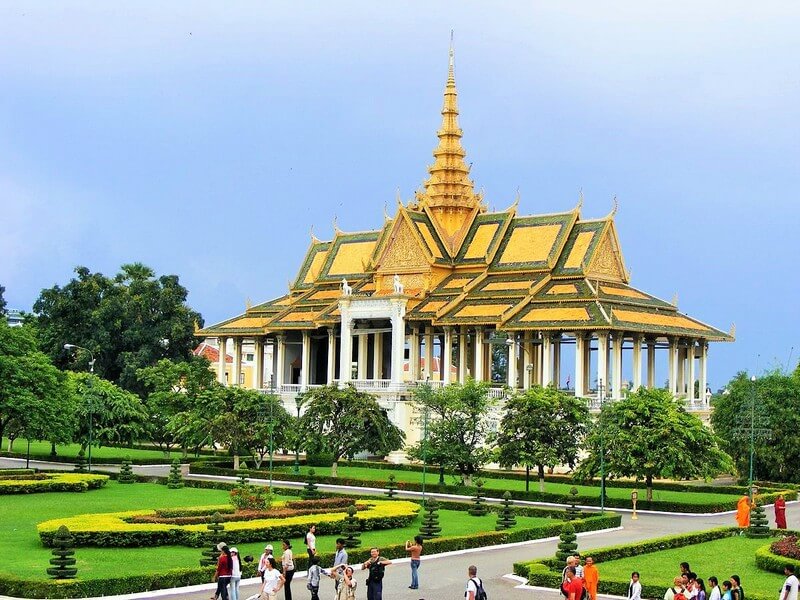
Exploring the Royal Palace: Must-Visit Sites
When visiting the Royal Palace, there are several must-visit sites that showcase the grandeur and historical significance of this iconic landmark. Let’s dive deeper into these sites:
The Throne Hall: A Grand Spectacle
The Throne Hall is the centerpiece of the Royal Palace complex and is a must-visit for anyone exploring the grounds. As you step into the hall, you’ll be greeted by its majestic architecture and awe-inspiring interior. Admire the intricate carvings, golden accents, and the grand throne that serves as a symbol of Cambodia’s monarchy. Take a moment to imagine the historic events that have unfolded within these walls and appreciate the cultural significance of this remarkable structure.
The Silver Pagoda: A Treasure Trove of Artifacts
The Silver Pagoda is another highlight of the Royal Palace complex that should not be missed. As you enter the pagoda, you’ll be mesmerized by its shimmering silver floor, which consists of 5,000 silver tiles. Explore the pagoda’s collection of cultural and religious artifacts, including the Emerald Buddha and the golden Buddha statue adorned with diamonds and other precious gems. The Silver Pagoda offers a glimpse into Cambodia’s rich spiritual heritage and artistic craftsmanship.
The Khemarin Palace: A Glimpse into Royal Life
While the Khemarin Palace is not open to the public, it still holds a certain mystique and charm. As you wander the grounds surrounding the palace, you’ll catch glimpses of its traditional Khmer architecture and serene atmosphere. Take a moment to admire its beauty from a distance and imagine the royal life unfolding within its walls. The Khemarin Palace is a reminder of the living legacy of Cambodia’s monarchy and its enduring role in the country’s history.
The Royal Treasury: A Hidden Treasure
Though not accessible to the public, the Royal Treasury remains an integral part of the Royal Palace complex. It houses Cambodia’s most precious royal regalia and treasures, safeguarding the nation’s cultural heritage for future generations. While you may not be able to enter the treasury, its significance cannot be understated. It serves as a reminder of Cambodia’s rich history and the importance of preserving its royal traditions.
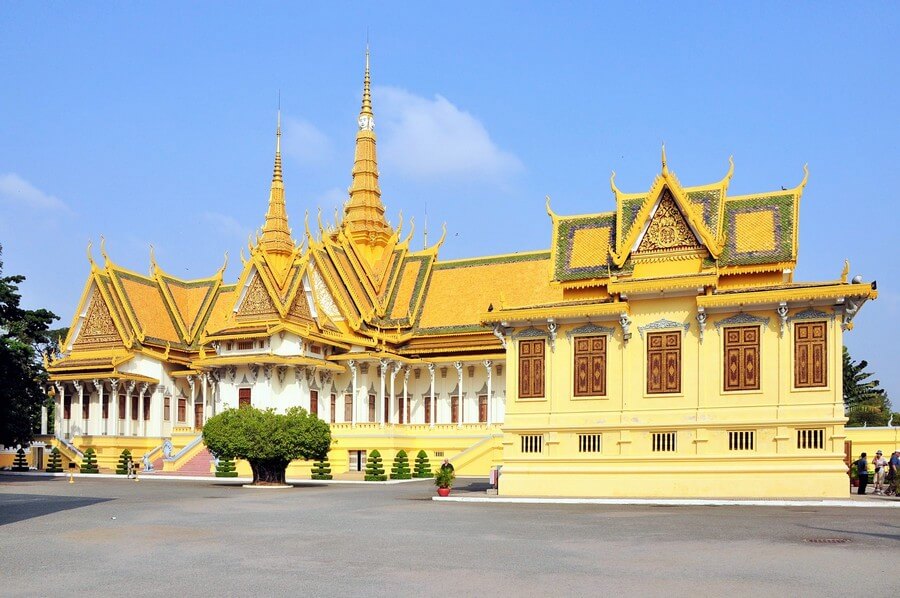
Cultural Significance of the Royal Palace
Beyond its historical and architectural significance, the Royal Palace plays a vital role in Cambodia’s cultural landscape. It is a testament to the country’s deep-rooted traditions, customs, and religious beliefs. Here are some key cultural aspects associated with the Royal Palace:
Buddhism and the Royal Palace
Buddhism plays a central role in Cambodian culture, and the Royal Palace reflects this religious influence. Within the palace complex, you’ll find numerous Buddhist statues, shrines, and prayer halls. These sacred spaces serve as places of worship for both the royal family and the general public, fostering a sense of spirituality and tranquility within the palace grounds.
Ceremonies and Celebrations
The Royal Palace is a hub for important ceremonies and celebrations, showcasing the cultural vibrancy of Cambodia. From royal weddings and coronations to religious festivals and state ceremonies, the palace serves as a venue for these significant events. Visitors may have the opportunity to witness or participate in traditional ceremonies, providing a firsthand experience of Cambodia’s rich cultural heritage.
Traditional Arts and Crafts
The Royal Palace is also a patron of traditional arts and crafts, providing a platform for local artisans to showcase their skills and preserve traditional techniques. Within the palace complex, you’ll find exquisite examples of Cambodian craftsmanship, including intricate wood carvings, delicate silk fabrics, and ornate gold and silver jewelry. Exploring these artistic treasures allows visitors to appreciate the talent and dedication of Cambodia’s artists.
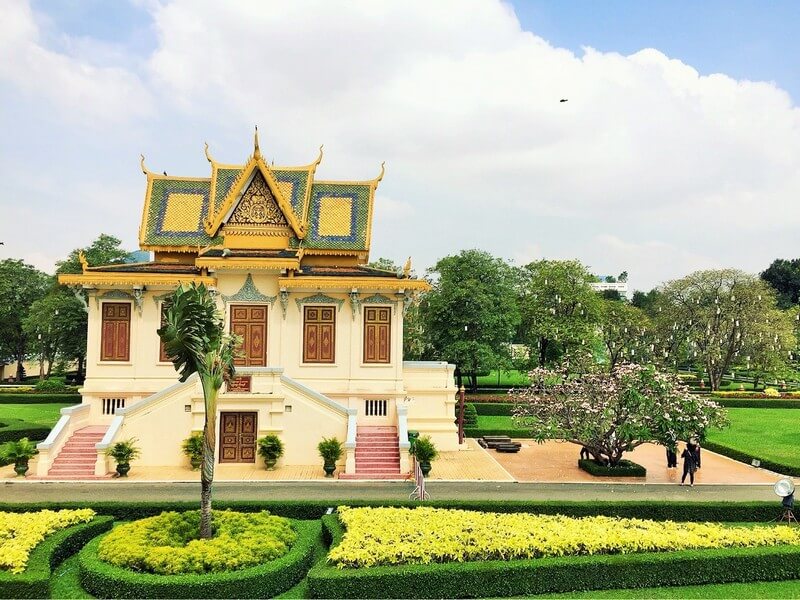
Practical Information for Visitors
Location and Opening Hours
The Royal Palace is located in the heart of Phnom Penh, Cambodia’s capital city. It is easily accessible by various modes of transportation, including taxis, tuk-tuks, and buses. The palace is open to visitors daily from 8:00 AM to 11:00 AM and from 2:00 PM to 5:00 PM. However, please note that these hours may be subject to change, so it’s advisable to check the official website or contact the palace for the most up-to-date information.
Dress Code and Etiquette
When visiting the Royal Palace, it’s essential to dress respectfully and adhere to the palace’s dress code. Both men and women should wear clothing that covers their shoulders and knees. Additionally, it’s important to maintain a respectful demeanor and refrain from loud noises or disruptive behavior. Remember, the Royal Palace is a sacred and historical site, and it’s important to show reverence and respect during your visit.
Guided Tours and Experiences
To enhance your Royal Palace experience, consider joining a guided tour or participating in cultural activities offered within the palace grounds. These tours and experiences provide valuable insights into Cambodia’s history, culture, and royal traditions. Knowledgeable guides will share fascinating stories and anecdotes, enriching your understanding of this remarkable landmark.
Nearby Attractions
While visiting the Royal Palace, take the opportunity to explore other nearby attractions, such as the National Museum of Cambodia, Wat Phnom, and the bustling Central Market. These attractions offer further insights into Cambodia’s history, art, and local life, providing a holistic travel experience.

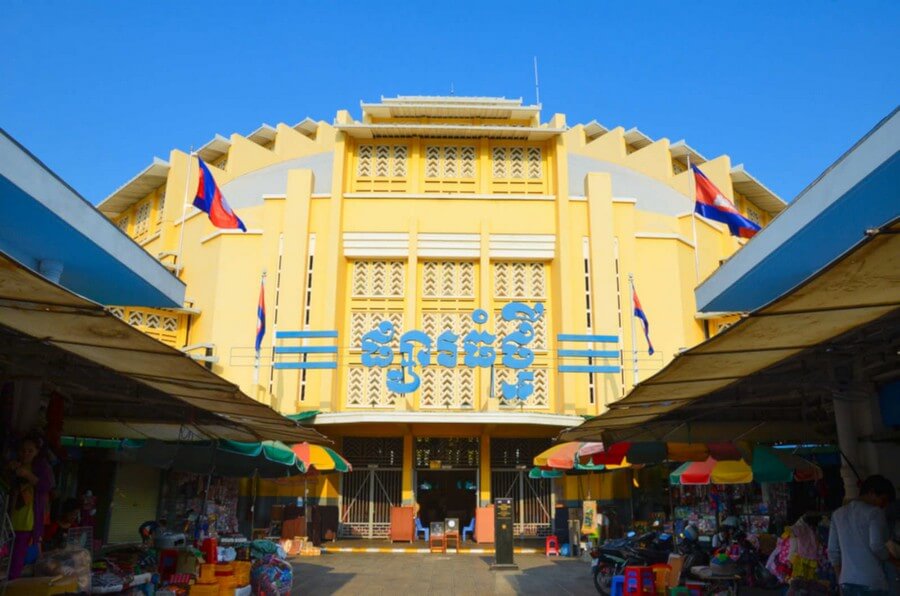
Conclusion
The Royal Palace in Phnom Penh is not just a physical structure; it represents the heart and soul of Cambodia. With its grand architecture, rich history, and cultural significance, the palace offers visitors a unique opportunity to delve into the country’s past and present. As you explore the Throne Hall, the Silver Pagoda, and other significant sites within the palace complex, you’ll gain a deeper understanding of Cambodia’s royal heritage and the enduring legacy of its monarchy. Immerse yourself in the captivating beauty of the Royal Palace and discover the wonders that await within its storied walls.
Whether you’re a history buff, a cultural enthusiast, or simply a curious traveler, a visit to the Royal Palace is an essential part of any journey through Cambodia. Allow yourself to be transported to a bygone era, where tradition and modernity merge seamlessly and experience firsthand the magic that makes the Royal Palace an iconic destination. Plan your trip to Phnom Penh today and embark on a remarkable journey into Cambodia’s rich history and culture.
